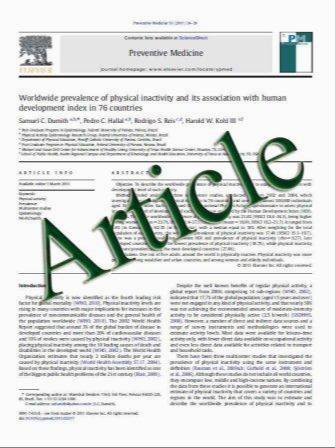The muscle–bone unit of peripheral and central skeletal sites in children and young adults
- نوع فایل : کتاب
- زبان : انگلیسی
- مؤلف : R. L. Ashby & J. E. Adams & S. A. Roberts & M. Z. Mughal & K. A. Ward
- چاپ و سال / کشور: 2010
Description
Summary Changes and gender differences in the muscle bone unit at different skeletal sites were investigated during pubertal development. Females accrued greater BMC in relation to muscle compared to males; these gender differences were greater after adjustment for height and regional fat mass. Purpose To describe changes and gender differences in the muscle–bone unit at different skeletal sites during pubertal development. Methods Four hundred forty-two children aged 5–18 years were studied. Measurements of bone mineral content (BMC), lean mass (LM) and fat mass of the whole body (WB), legs, arms and lumbar spine were obtained from dual-energy X-ray absorptiometry. Peripheral quantitative computed tomography was used to measure BMC of the radius diaphysis and cross-sectional muscle area (CSMA) of the mid-forearm. These measurements were used to describe differences between, and within, genders at each pubertal stage in BMC accrual relative to muscle, both before and after adjustment for height, regional fat and muscle at central and peripheral skeletal sites. Results In males, there were significant increases in adjusted WB and leg BMC at the end of pubertal development. Unadjusted and adjusted lumbar spine BMC increased at the onset of, and at the end, of puberty. Radius BMC increased at most pubertal stages. In females, there were increases in unadjusted and adjusted whole body BMC at late puberty, in leg BMC at the onset of puberty and at pubertal stage four. Unadjusted arm BMC increased at most pubertal stages; however, after adjustment, an increase occurred at pubertal stage four. Both adjusted and unadjusted lumbar spine BMC increased at pubertal stage four. Unadjusted radius BMC increased at most pubertal stages. Females had greater BMC at all skeletal sites, compared to males, except at the radius, where adjusted BMC was greater in males at pubertal stage four. Conclusions Males and females accrue more BMC in relation to lean mass at multiple skeletal sites as puberty proceeds. Females accrue more BMC in relation to lean mass, in comparison to males, at most skeletal sites.
Osteoporos Int (2011) 22:121–132 DOI 10.1007/s00198-010-1216-3 Received: 7 July 2009 / Accepted: 11 February 2010 / Published online: 24 March 2010


